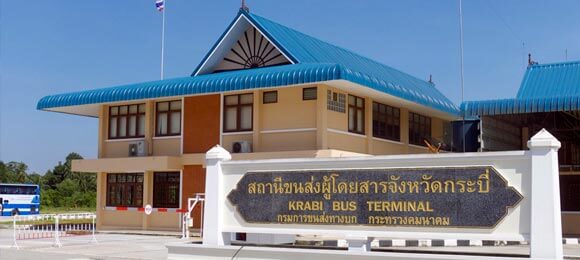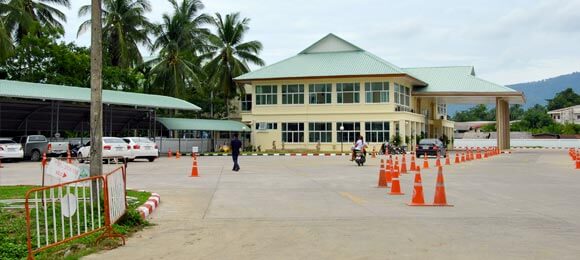 Diving in Similan Islands
Diving in Similan Islands
Similan Islands in the Andaman Sea are a true paradise for diving, a "must" for divers and snorkellers. The archipelago is the most beautiful and diverse dive destination in Thailand, and also one of the best ten dive destinations in the world, according to the National Geographic Society. It consists of a 25 Km long chain of nine stunning and pristine islands and several granite rocks that barely break the sea surface off the coast of Phang Nga Province, southern Thailand, just 65 Km west of Khao Lak and 85 Km north-west of Phuket. Similan Islands were formed by lava in the tertiary period, around 65 million years ago. Similan Archipelago was declared a national park in 1982 and appointed "Mu Ko Similan Marine National Park", where "Mu Ko" means cluster of islands in Thai and "Similan" is a Yawi word, a Malayan dialect, which means nine. In 2001, the Ministry of Agriculture includes at Park two remote islands named Koh Bon and Koh Tachai, which are located at 22 and 60 Km north of the archipelago. Each of the Similan Islands has a name as well as a number that running from south to north, these are: Koh Hu-Yong or # 1, Koh Pa-Yang or # 2, Koh Pa-Yan or # 3, Koh Miang or # 4, Koh Ha or # 5, Koh Payu or # 6, Kho Hi Pusar or # 7, 8 Koh Similan or # 8, 9 Koh Ba-Ngu or # 9, Koh Bon or # 10 and Koh Tachai or # 11. The Park Headquarters on archipelago is in Koh Miang, the island # 4, where are also some spartans bungalows and tents. The Park HQ on mainland is in Thap Lamu, a small fishing village located just 15 Km from Khao Lak, which it is the nearest access to the islands. Read More
 Marine Life & Reefs
Marine Life & Reefs
The crystal clear waters around the Similan Islands are very rich of marine life and you will spot, in addition to usual reef fishes, the larger marine species in Thailand. The imposing structures and the insulation offshore of Similan make these islands real centres of attraction for marine life, with huge shoals of plankton and baitfish that attracting predatory fish from many miles away. Here are frequent sightings of Manta Rays, Dolphins, Black Tip and White Tip Reef Shark as well as large and harmless Whale Sharks. Offshore are sedentary Black Marlin, Blue Marlin, Yellow Fin Tuna, Kawakawa Tuna, Dogtooth Tuna and Sail Fish. The stunning coral reefs are populated by a lot of fish species including Angelfish, Unicornfish, Butterflyfish, Parrotfish, Pufferfish, Jackfish, Sea Snakes and a huge variety of invertebrates, such as Octopus, Cuttlefish, Squid, and Crabs. Between cracks and crevices are resident Shrimps, Lobsters, Zigzag Clams and Oysters. Anemones, soft and hard coral provide shelter to Clownfish, Surgeonfish, Harlequin Rasbora and Seahorses. The reef is a perfect habitat for Nubibranchs, Glassfish and other baitfish, which it is why you will see so many predators here, such as Lionfish, Scorpionfish and Moray Eels. On the bottom of the sea, between sand and scattered rocks rest large Groupers and Leopard Sharks. In the surrounding waters swim big Turtles and large shoals of pelagic fish, such as Amberjack, Dorado, Barracuda and Trevally. The beauty of the Similan Islands is also due to the great variety of its stunning coral reefs. Underwater the scenery is really dramatic with large granite boulders covered with gardens of colourful anemones, barrel sponges, superb gorgonian sea fans, soft and hard coral in the most varied forms, like deer staghorn, leaves and mushrooms. In the channels between the boulders, the gorgonian sea fans can grow up 3 metres across, making it difficult to swim through. Due to their shape and their position, the impact of the 2004 Tsunami on the Similan Islands was much lower than expected. Luckily only a third of the corals were damaged and hardly any sediment was washed away, consequently there has been no significant change in its coasts and coral reefs.Read More
Basic Information
Access: Liveaboards and day trips from Khao Lak and Phuket. Distance: 65 Km west of Khao Lak; 85 Km northwest of Phuket. Recommended length of stay: 4-6 days. Number of dive sites: >25. Water Temperature: Between 26-29° C. Surface Conditions: Calm to slightly choppy. Current: Moderate to strong. Diving Depth: Between 5->40 metres. Visibility: Ranges from good to excellent between 15-40 metres. Experience Level: Suitable to intermediate and advanced divers. Please note: Park is officially open to the public from 15 October until 15 May, but dates may vary each year.
Dinamic Map
 Access to Similan Islands
Access to Similan Islands
The Similan Park is located off Andaman Sea coast, southern Thailand, 65 Km west of Khao Lak, Phang Nga Province, and 85 Km north-west of Phuket. The nearest access to the Similan Islands is Thap Lamu, a small fishing village located just 15 Km from Khao Lak, where there is also the Park Headquarters. Given the distance from the mainland this diving destination is better explored with multi-day cruises on boats adapted for diving, however it is also possible to dive there with a day trip with speedboats. The dive cruises and speedboats to the archipelago run daily from the middle of October to the middle of May, during the monsoon season the Park is closed due rough sea. The trip takes three hours each way on cruise boats or 80 minutes via speedboat.
A lot of specialized agencies and scuba centres that organize day trips and liveaboard cruises to the Similan Islands. The organizers also provide the transportation by minivan from your hotel in Khao Lak or the other tourist resorts of south Thailand, like Phuket or Krabi. The cost of a one-day trip from Thap Lamu ranges from 5,500 to 6,500 THB depends on the number of dives planned throughout the day, usually 2, and the selected sites. The majority of these tours include the roundtrip by speedboats from Thap Lamu docks, tanks, weights and weight-belts, lunch buffet, tropical fruit, drinking water, Marine Park fees, assistance by dive guides and insurance; are excluded personal diving gear and Nitrox. Pick-up from hotel normally is at 06:00-07.00 a.m., and the return is at 18.00-20.00. The multi-day cruises to the Similan are the best way to explore this diving paradise.
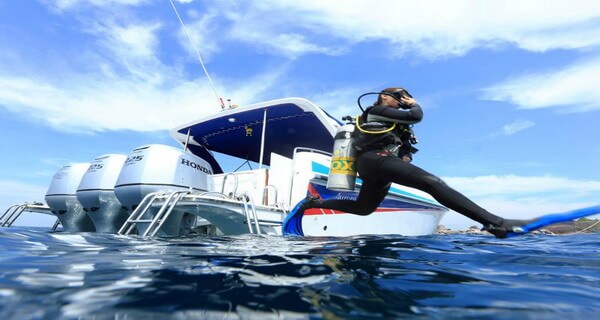
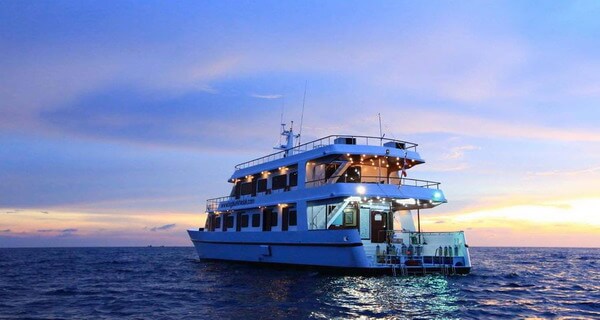
Comfortable dive boats allow you to dive in these wonderful sites for several days with multiple daily diving. Cruises are available by a minimum of 4 days / 3 nights up to a full week. The costs depend on the chosen boat, by diving equipment and services on board, indicatively ranging from 6,000 to 10,000 THB per day per person. Discounts are provided for cruise passengers who do not make diving. The price includes the transfer by minivan from your hotel or airport to the piers, accommodation in cabins, tanks, weights and weight-belts, assistance by dive guides, insurance and all meals on board; are excluded personal diving gear, Nitrox and Marine Park fees, 1,800 THB diver/1,000 THB non diver. During peak season liveaboard cruises also depart from Chalong Pier in Phuket, clear the journey to the Similan is longer, about 5 hours, and the costs are a little higher.
 Dive Sites and Diving Season
Dive Sites and Diving Season
All along the west coast of southern Thailand, where lie the Similan Islands, the best conditions exist from November to April, when the surface conditions are generally calm. Visibility can easily reach over 40 metres and the water temperature is between 26° C and 30° C. From late May to October, the monsoon winds swell the surface of the Andaman Sea reducing the visibility of more than 30%, this makes it impractical and dangerous to diving and the Park is therefore closed for safety from 15 May until 15 October, but dates may vary each year. The seabed between the Similan Islands slopes down to approximately 70 meters and then descends to the depths of the ocean. The Park has generally two different kinds of diving with more than 25 dive sites. The eastern side is characterized by a gentle slope with coral reefs interspersed by numerous sandbanks dotted with boulders. Here are most of the stunning beaches, diving and snorkelling sites. The western side is steeper with huge granite formations that dropping directly into ocean and numerous channels where can swim through. East of Eden is the most famous dive site in the east, just off southeast coast of Koh Payu, and Elephant Head Rock closed to southern tip of Koh Hin Pusar is one of best on the western site. Fantasy Reef, probably the most beautiful site on the western side, has been closed to all diving activities after its condition had significantly deteriorated. Richelieu Rock, which is considered the most important of all dive sites in the Similan Islands, in reality it is part of Surin National Park but nevertheless it is normally inserted as destination in the diving cruises to the archipelago. Other popular Similan's dive sites include North Point, Anita's Reef, Christmas Point, Deep Six, Boulder City and the impressive pinnacles off Koh Bon and Koh Tachai.
Elephant Head Rock
Elephant Head Rock is the most famous dive spot of the Similan Islands. Locally known as Hin Pousar, the site is named after an unusually shaped rock that juts out of the water just a mile off the south-western shore of Koh Similan. The huge boulders that form Elephant Head are rich of several small caverns, arches, gullies, tunnels and swim-throughs, which make the site very popular among divers and underwater photographers. The surface of the granite reef is covered with soft and hard corals, stag horn corals, gorgonian sea fans and anemones that provide shelter to a large variety of reef fishes and invertebrates. Marine life includes Clownfish, Parrotfish, Blue-ringed Angelfish, Moray Eel, Lionfish, Hawkbill Turtle, Spider Crab, Shrimp, Cuttlefish and Octopus. In the waters around the large granite boulders swim in hunting large shoals of pelagic fish, such as large Snappers, giant Trevallies, Barracuda and occasionally Manta Ray. The southern side of site consists of submerged pinnacles where are frequent sightings of many species of sharks, like White Tip, Black Tip and Leopard Sharks. Elephant Head Rock is better suited to experienced divers because the sea bottom here is very deep, around 60 metres, and the current can be very strong.Read More
Site Features
- Position: Koh Hin Pusar, a mile off the south-western shore of Koh Similan
- Water Temperature: Between 26-29° C
- Surface Conditions: Calm to slightly choppy
- Current: Moderate to strong
- Diving Depth: Maximum 40 metres, average 20 metres
- Visibility: Ranges from good to excellent between 20-40 metres
- Experience Level: Suitable to experienced divers
East of Eden
East of Eden is no doubt one of the best dive spots of the Similan Islands and probably one of most famous in Thailand. It is situated on the southeast coast of Island number 7, Koh Payu. In the last ten years, East of Eden has been closed to all diving activities more than once due its condition had significantly deteriorated. As of the end of the 2012/13 diving season it was officially reopened to divers, after a marine regeneration programme. Feature of this site is a colourful reef that starts 5 metres below sea level that, after a slow initial slope, steeply reaches the depths of 35 metres with an average diving depth of 20 metres. The visibility is very good and the current is moderate up to 10 meters making the part closest to the surface suitable for the snorkelling and for night diving. The site runs from north to south and it can be accessed at either end depending on the currents. The site is home to the biggest coral head called "The Orchid Garden", which starts at 25 metres and rises up to 12 metres covered with violet and blue corals, staghorn coral, pore corals, orange and red gorgonian sea fans, colourful anemones and bommies. This reef is really stunning for underwater macro photography. Even marine life is amazing. Here you will find a huge density of all the reef fishes that the Andaman Sea can offer including Hawksbill Turtles, Ribbon Eels, Frogfish, Blue-ring Angelfish, Clown Triggerfish, Pipefish, giant Moray Eels, Butterflyfish, Royal Angelfish, Lionfish, Jackfish and Sea Snakes. Here are also resident a huge variety of invertebrates, such as Octopus, small Lobsters, Shrimps, Cuttlefish, Squid, and Crabs. In the surrounding waters are large shoals of pelagic fish, such as Amberjack, Dorado, Barracuda and Trevally. The deeper end of the reef is a sandy seabed, home to Groupers, Stingray, Black Tip and Leopard Sharks.Read More
Site Features
- Position: On the southeast coast of Koh Payu
- Water Temperature: Between 26-29° C
- Surface Conditions: Calm to slightly choppy
- Current: Moderate, can be strong in depth
- Diving Depth: Maximum 35 metres, average 20 metres
- Visibility: Ranges from good to excellent between 10-30 metres
- Experience Level: Suitable to all levels of divers and snorkellers
Fantasy Reef
Fantasy Reef is located a bit offshore the west coast of Koh Similan. It was considered the best diving site of the archipelago and one of the most beautiful in the world before its closure. Fantasy Reef has been closed to all diving activities more than once since 1999 due its condition had significantly deteriorated. The authorities of the park blamed that the deterioration was caused by excessive diving activities. Dive operators claimed instead that it was the fishing boats fault, often without permission, that entered in the park during the off-season, when the dive operators and rangers were not present in the sites. The dispute ended after 2004 Tsunami and 2010 Coral Bleaching events, which caused no doubt damage to all coral reefs in Andaman Sea. To date the stunning site is still closed. The site consists of huge granite formations that starting from a depth of 9-12 metres drop down to the sea bottom at about 40 metres. The granite boulders, which were covered by one of the most beautiful coral reefs of the Similan Islands, are today subject to a marine regeneration programme. The marine life here is truly fantastic with a great variety and density of fishes and includes practically all species of the Andaman Sea.Read More
Site Features
- Position: Offshore the west coast of Koh Similan
- Water Temperature: Between 26-29° C
- Surface Conditions: Calm to slightly choppy
- Current: Mild to medium
- Diving Depth: Maximum 40 metres, average 15 metres
- Visibility: Ranges from good to excellent between 20-40 metres
- Experience Level: Suitable to intermediate and advanced divers
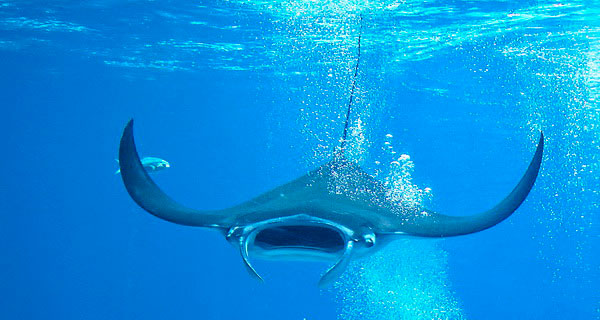
Richelieu Rock aka Hin Plo Naam
The world-famous Richelieu Rock is without doubt the best diving site in Thailand, and one of the best in the world according to the National Geographic Society. Discovered by Jacques Cousteau, Richelieu Rock is a submerged limestone pinnacle in open sea between the Surin Islands and the mainland. Indeed, despite many people thinks it is part of the Similan Islands, the site is part of the Mu Ko Surin National Marine Park. The Richelieu Rock is located 17 Km east-southeast of Koh Surin, 36 Km west-northwest of the mainland at Suk Samran district, 90 Km north of Koh Ba-Ngu, the northernmost of the Similan Islands and 80 Km northwest of Khao Lak docks. Divers can get to Richelieu Rock with diving day trip by speedboat from Khao Lak, about 2 hours boat ride, or with a liveaboards to the Similan and Surin Islands. The topography of the site consists of a single awesome pinnacle, which almost reaches the surface at low tide. From the sea surface the limestone cliffs descend up to 50 metres of deep, a dramatic drop off breathtaking. The rock surface is covered with anemones, sea fans, barrel sponges and soft corals of all kinds. The sheer diversity of marine life in Richelieu Rock is amazing. Here you will find a huge density of all marine species that the Andaman Sea can offer including Moray Eels, Lionfish, Scorpionfish, Anemonefish as well as Emperor Angelfish, Seahorses, Ornate Ghost Pipefish. Around the pinnacle swim in hunting large shoals of pelagic fish like large Snappers, Bigeye Trevally, Fusiliers and Chevron Barracuda. In the deep waters near the seabed can be seen Groupers, Stingray, Nurse Sharks, Leopard Sharks and occasionally White Tip Reef Shark. Despite so much marine life the site is mostly frequented by world divers especially to admire two of largest pelagic species of the oceans id est Whale Shark and Manta Ray. Richelieu Rock is famous as one of the best places in the world to dive with the majestic Whale Sharks. Encounters with the largest fish in the ocean, are rare almost everywhere in the world and these are the dream of all divers. Richelieu Rock isn't the only Thailand dive destination where Whale Sharks can be seen, but at this impressive pinnacle the chance of sightings are greater, a possibility higher of 10% of the time. Swimming with this immense creatures is a never to be forgotten experience for any diver. The largest confirmed individual had a length of 12.65 metres and a weight of about 21.5 tons, but there are unconfirmed claims of larger specimens, over 14 metres long and weighing at least 30 tons. The isolation of Richelieu Rock and the wealth of plankton in the surrounding waters attract these solitary creatures from many miles around, especially between February and April. Whale Sharks aren't the only large creatures attracted to Richelieu Rock to feed on plankton. Manta Rays are also regular visitors throughout the year, with a greater chance of sightings between April and May. Manta Rays usually come here in small groups, unlike the Whale Sharks that are solitary, to feed on Zooplankton, his favourite food, or be cleaned. The majestic creatures are usually maintains a nearly stationary position on top of a coral patch for several minutes while to be cleaned by cleaner fish.Read More
Site Features
- Position: About 17 Km east-southeast of Koh Surin, 90 Km north of Koh Ba-Ngu, 80 Km northwest of Khao Lak, 180 Km north of Phuket
- Water Temperature: Between 26-29° C
- Surface Conditions: Calm to slightly choppy
- Current: Can be strong
- Diving Depth: Maximum 50 metres, average 15 metres
- Visibility: Ranges from good to excellent between 15-35 metres
- Experience Level: Suitable to experienced and advanced divers
North Point
North Point is one of the best dive spots in the Similan Park. Also known as Triple Arches or Golden Arches it is the northernmost site of the original nine islands, just 50 metres off north shore of Koh Ba-Ngu, the Island # 9. North Point is a challenging dive site, where you can reach great depths as other site of Similan, but here are more frequent big waves and strong currents, therefore it is suitable only to advanced divers. The reef is characterized by a cluster of huge submerged boulders, which are scattered out away from the island towards to the north. The granite formations begin 8 meters below the surface and then drop down to a sandy bottom at about 40 metres deep, 50 metres at its northernmost point known to divers as North Point Pinnacle. Visibility is generally excellent and ranges between 20-40 metres. The reef is mostly covered with hard corals with a few patches of soft corals or anemones. Blue sea stars, black spiny sea urchins and giant sea cucumbers are clinging to the smooth rock surfaces. The huge granite boulders have also several fascinating swim-throughs and caverns to explore. All along the reef marine life is prolific with a wide variety of species to be admired and photographed, such as Moray and Ribbon Eels, Angelfish, Clownfish, Pipefish or predators as Lionfish and Scorpionfish. Octopuses are difficult to spot here, easier to make a photo shoot of Cuttlefish, Lobsters, Shrimps and Crabs. Large shoals of Fusiliers and Surgeonfish swim near the reef. Giant Barracudas are in hunting a little way away from the rocks. Green and Hawksbill Turtles are common here, as well as Sea Snakes and Napoleon Wrasse. Large Groupers and Leopard Sharks can be seen in the sandy bottom at edge of the boulders. In the deep crystal water of North Point is also reported sightings of Whale Sharks and Manta Rays, the larger pelagic species of the Andaman Sea.Read More
Site Features
- Position: Just off north coast of Koh Ba-Ngu
- Water Temperature: Between 26-29° C
- Surface Conditions: Calm to slightly choppy
- Current: Moderate often strong
- Diving Depth: Maximum 40 metres, average 20 metres
- Visibility: Ranges from good to excellent between 29-40 metres
- Experience Level: Suitable to advanced divers
Anita's Reef
Anita’s Reef is one of top five dive sites of the Similan Islands. The beautiful reef is situated on the east coast of Koh Ha, just off Koh Miang. The site consists of a gentle sandy sloped reef interspersed with patches of staghorn coral, table corals and large coral bommies covered with soft corals, sponges and colourful gorgonian sea fans. The average depth of reef is between 12 and 35 metres with excellent visibility. Anita's Reef is an easy dive site with middle currents and gentle sloped reef, which make it one of most popular dive sites for both intermediate and advanced divers, suitable for night dive as well. The main attraction here is a huge coral bommie in the south east of the site. It rises from the sandy bottom at more than 20 meters deep to just 12 metres below sea surface. The huge bommie is surrounded by various colourful soft and hard corals, giant sea fans and anemones on the top. In Anita’s Reef the marine life is spectacular around all bommies and granite boulders, with constant sightings of Lionfish, Scorpionfish, Titan Triggerfish, Parrotfish and Emperor Angelfish. Anemones offer shelter to Anemonefish, Porcelain Crabs and Shrimps. In the surrounding waters swim large shoals of pelagic fish, such as various families of Snappers, Soldierfish and Fusiliers. On the sandy bottom you will find rare Blue Spotted Stingray and Spotted Garden Eel.Read More
Site Features
- Position: On the east coast of Koh Ha, just off Koh Miang
- Water Temperature: Between 26-29° C
- Surface Conditions: Calm to slightly choppy
- Current: Mild
- Diving Depth: Maximum 35 metres, average 10 metres
- Visibility: Ranges from good to excellent between 25-35 metres
- Experience Level: Suitable to intermediate and advanced divers
Deep Six
Located just off the north coast of Koh Payu is one of the more exciting dive sites in the Similan Islands. It is, as the name suggests, a deep dive site suitable to experienced divers. The site consists of giant granite boulders to form a V-shaped ridge, which starts just 5 metres below the sea surface and then descend dramatically to more than 40 metres deep. Either sides of ridge are rich of canyons, tunnels, swim-throughs and caves, among them the main is a large cavern at the anchoring point of the buoy line. Clusters of other smaller boulders are scattered all around. The granite walls are covered with gorgonian sea fans, giant barrel sponges, feather stars and a wide variety of hard and soft corals as table, greem tree, wire, wart finger and leather corals. All along the reef the marine life is prolific with a huge variety of fish and invertebrates, such as Octopus, small Lobsters, Blue Sea Stars, Sea Cucumbers, Shrimps and Crabs. Closer to the reef or hidden among crannies, corals and anemones you'll see Nudibranches, Parrotfish, Emperor Angelfish, Frogfish, Clownfish, Pipefish or predators as Lionfish, Scorpionfish, Moray Eels and occasionally Turtles. Outside the reef in hunt there are large shoals of Barracuda, giant Trevally and Dogtooth Tuna. So much marine life also attracts larger predators, Blue-Spotted Stingrays, White Tip Reef Sharks and Leopard Sharks swim or rest near the sea bottom. Lucky divers have also reported few sightings of Manta Ray and Whale Shark, but normally these species pass through Deep Six only to move to other sites of the Similan.Read More
Site Features
- Position: On the north side of Koh Payu
- Water Temperature: Between 26-29° C
- Surface Conditions: Calm to slightly choppy
- Current: Moderate to strong
- Diving Depth: Maximum 40 metres, average 22 metres
- Visibility: Ranges from good to excellent between 10-30 metres
- Experience Level: Suitable to experienced divers
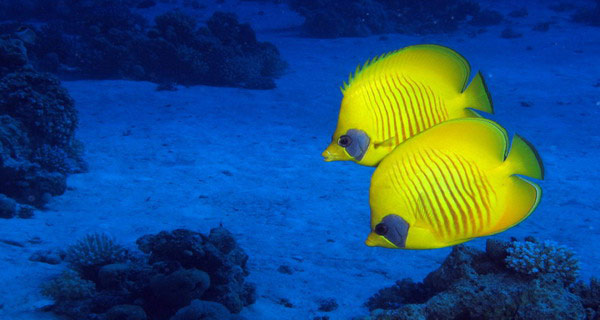
Christmas Point
Christmas Point is a wonderful coral reef at the far north of the Similan Islands, one of the best and favourite dive sites in the National Park. It is located just off a small bay in the western tip of Koh Ba-Ngu, the Island # 9. The reef consists of a cluster of submerged boulders and pinnacles on a relatively flat sandy seabed. Diving depths range between 10-40 metres with an average depth of 20 metres; the visibility is excellent, normally between 20-30 metres some days even better. An exciting drop-off with tunnels, hollows, caverns and huge collapsed stones where can swim through. The rock formations are covered with colourful soft corals and gorgonian sea fans. Christmas Point derives its name from the numerous vivid red, yellow and green corals that cover the walls of its caverns like a 'Christmas Tree'. Blue Sea Stars, Nudibranchs and giant Sea Cucumbers are also clinging to the reef. The reef is teeming of marine life. Here divers have the opportunity to see Pufferfish, Porcupinefish, Ribbon Eel, Frogfish, Angelfish and Butterflyfish. Thousands of Glassfish, Oriental Sweetlips and Needlefish seek shelter under rocks or between corals and sea fans when large shoals of Trevally and Barracuda make raids to catch the small baitfish. Fans of macro and underwater photography will also have good chances of spotting Napoleon Wrasses, Turtles, Mantis Shrimps as well as Titan Triggerfish, Clown Triggerfish. Leopard Sharks, White Tip Reef Shark and Black Tip Reef Sharks can be seen in the deep sandy areas around the edge of the reefs, as well as Manta Ray and Whale Shark, who make occasional appearances here at Christmas Point.Read More
Site Features
- Position: Off the western tip of Koh Ba-Ngu
- Water Temperature: Between 26-29° C
- Surface Conditions: Calm to slightly choppy
- Current: Medium
- Diving Depth: Maximum 40 metres, average 20 metres
- Visibility: Ranges from good to excellent between 20-35 metres
- Experience Level: Suitable to advanced divers
Boulder City
Boulder City is an impressive dive site about 2 Km off the east coast of Koh Payan, the Island # 3, and it is the southernmost diving site in the Similan Islands. As its name suggests, Boulder City is a huge submerged granite formation characterized by three main pinnacles surrounded with hundreds other smaller boulders scattered around a flat sandy bottom. The average diving depth is about 15 metres and then drop until 35 metres. The visibility is always excellent even on the bottom. The site is a challenge for experienced divers because of its currents that often are strong and there aren't areas of the site shallower than 10 metres. The boulders are generally smooth with few corals although there are some patches of soft coral and crinoids growth. Sea fans and sea whips feed are at the sides of the boulders. The lack of coral is not a problem, because in its place there are vast gardens of algae, which attracting fishes and invertebrates, and consequently reef predators. Marine life includes Angelfish, Parrotfish, Unicorn Fish, Oriental Sweetlips, Andaman Jawfish, Cuttlefish, Octopus and predators like Moray Eels, Groupers, Lionfish and Scorpionfish. Between cracks and crevices are Shrimps, small Lobsters, Crabs, Clams and Oysters. Large shoals of pelagic predators swim around the cliffs in hunting, such as giant Barracuda and Snappers. There are often shoals of Yellow-dash and Neon Fusiliers in this area, as well as Black Damsels and Indian Mackerel. Due to its exposed location in open sea away from the islands here it is possible to see the larger marine species, including Leopard Sharks, White Tip Reef Sharks, Dogtooth Tunas and occasionally Whale Shark and Manta Ray.Read More
Site Features
- Position: 2 Km off the east coast of Koh Payan
- Water Temperature: Between 26-29° C
- Surface Conditions: Calm to slightly choppy
- Current: Medium, can be strong
- Diving Depth: Maximum 30 metres, average 15 metres
- Visibility: Ranges from good to excellent between 20-30 metres
- Experience Level: Suitable to advanced divers
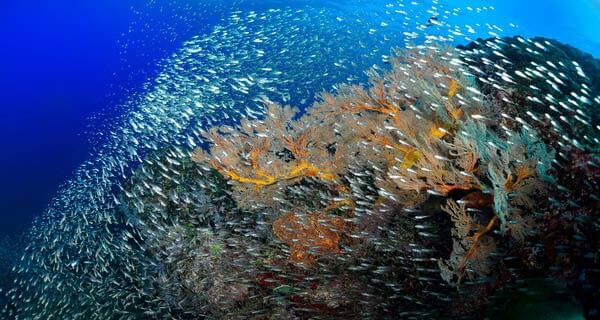
Shark Fin Reef
Shark Fin Reef is one of the more southern dive sites in the Similan Islands. The popular dive spot is located 1 Km off northeast coast of Koh Payan, about 2 Km north of Boulder City that it’s basically part of the same submerged rocky ridge. Shark Fin Reef is the largest of all the Similan Islands dive sites, over one kilometre from its northwest tip to southeast ends. Its name derives from three boulders which break the surface at most tides and vaguely resemble the fins of sharks. The reef is made up of a series of enormous submerged granite boulders covered with gorgonian sea fans and various hard corals. The site is so extensive that it has different features from north to south. The north-eastern side is characterized by a gentler slope of hard corals. The south-western side has a steep wall that drops dramatically to 40 meters deep, which reminiscent an underwater Grand Canyon. The average depth of Shark Fin Reef is 18 metres and the max depth is 40 metres. The visibility is always excellent between 15-40 meters. The currents are medium, often can be strong making the site more suitable for experienced divers. Along the granite boulders the marine life is really great, with many of the species found in the Andaman Sea including Turtles, Cuttlefish, Lionfish, Scorpionfish, Clown Triggerfish, Bannerfish, Moray Eel, Yellow Goatfish and Blue-faced Angelfish. Some species which are rarely seen at other dive sites in the Similan Islands are more common here, like Napoleon Wrasse and Humphead Parrotfish. shoals of Fusilier, Snappers and Barracuda swim all around the reefs, as well as Black Fin and White Fin Sharks. On the seabed at the base of the boulders are residents the Leopard Sharks. Although uncommon, sightings of Whale Shark and Manta Ray are reported, especially in April and early May.Read More
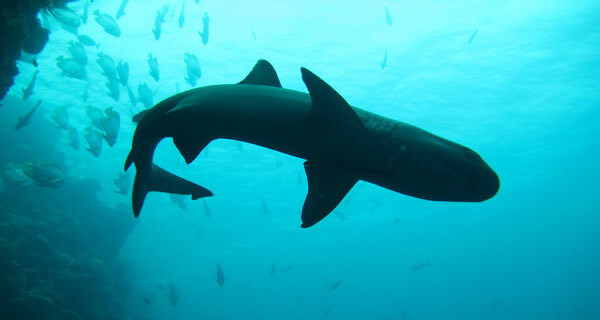
Site Features
- Position: 1 Km off northeast coast of Koh Payan
- Water Temperature: Between 26-29° C
- Surface Conditions: Calm to slightly choppy
- Current: Medium, can be strong
- Diving Depth: Maximum 40 metres, average 18 metres
- Visibility: Ranges from good to excellent between 15-40 metres
- Experience Level: Suitable to advanced divers
Beacon Reef & Beacon Point
Beacon Point is a famous multi-level dive site in Koh Similan, the Island # 8. It is located in the most southern point of Beacon Reef, also known as Beacon Beach, and together forms the longest reef in the Similan Islands. Beacon Beach covers the entire south-eastern part of the largest island of the Park, and is in turn an interesting dive and snorkelling site, frequented mainly by one-day excursions with speedboats from Khao Lak. Unlike most of the Similan dive sites, the reef it is a simple sandy slope without the granite formations characteristics of islands. The sandy seabed is covered with hard and soft corals interspersed with staghorn corals and gorgonian sea fans. The beautiful coral garden is an ideal habitat for big and small tropical fish, such as Triggerfish, Parrotfish, Trumpetfish, Sweetlips and Fusiliers. The reef starts close to the beach, a few meters below the sea surface, it descends gently at first and then steeply drops to over 30 metres of deep. The currents here are mild near surface, stronger in the depth. The visibility is always excellent, usually more of 20 metres. The shallow waters are also suitable for snorkelling and intermediate divers. An additional attraction of Beacon Reef is the wreck of the Atlantis X liveaboard that sank in August 2002. The boat is quite roughed up and sits upright on the bottom, with the bow pointing up at about 16 metres deep and the stern sitting at around 30 metres. Beacon Point is a deep dive site at the southern tip of Beacon Beach. The site name derives from the large beacon that sits on the rocks at the southernmost tip of Koh Similan. The site is characterized by large patches of hard coral reef as well as huge granite formations covered with the biggest number of coral species of all Similan Islands, over 300 species on the same reef. The reef starts a few metres below surface and then drops down to a sandy bottom at 55 metres of deep. Beacon Point is a more challenging dive site than Beacon Reef. Its great diving depths and the strongest currents make the site more suitable for advanced divers. Its average deep is about 20 metres. The visibility varies from good to excellent, between 20-30 metres. The marine life which can be seen here is similar to ones in Beacon Reef, but Beacon Point offers best chances to spot the larger marine species that live in the Andaman Sea like Manta Rays and Eagle Rays. Blue Spotted Stingrays are lurking on the bottom as well as Leopard Sharks, White Tip and occasionally Black Tip Sharks. In the surrounding waters swim small and large shoals of pelagic fish, such as Groupers, Snappers, giant Trevallies and Barracuda.Read More
Site Features
- Position: In the south-eastern coast of Koh Similan
- Water Temperature: Between 26-29° C
- Surface Conditions: Calm to slightly choppy
- Current: Moderate to strong
- Diving Depth: Maximum 37 metres, average 20 metres
- Visibility: Ranges from good to excellent between 20-30 metres
- Experience Level: Suitable to intermediate and advanced divers
West of Eden
West of Eden is a little known and uncrowded dive site in the Similan Islands, however it is an interesting dive spot and well worth a visit. The site is located at the south-west corner of Koh Payu, just west of the most famous East of Eden. Like most western Similan diving sites, it consists of huge granite boulders that drop dramatically to 35 meters deep. Other smaller boulders are scattered around on the flat sandy bottom. There are also some canyons to explore. The steep underwater cliff is covered with gorgonian sea fans, anemones, feather stars, acropora table corals and soft corals. The average depth of West of Eden is 12 metres and the max depth is 35 metres. The visibility is always excellent between 20-25 meters. Currents are normally moderates, but often can be strong making the site more suitable for intermediate and advanced divers. The marine life is very rich with several kinds of Pipefishes, Moray Eels, Frogfish, Red Fire Goby, Red-tooth Triggerfish and invertebrates like Octopus, White-banded cleaner Shrimp, small Lobsters and Crabs. Turtles are frequently spotted near the sea surface. In the shallow areas of site swim large shoals of Yellow Goatfish and pelagic fiches, such as Trevally, Barracuda and Dogtooth Tuna. Black Fin and White Fin Sharks are common at greater depths.Read More
Site Features
- Position: At the south-west corner of Koh Payu
- Water Temperature: Between 26-29° C
- Surface Conditions: Calm to slightly choppy
- Current: Moderate, can be strong
- Diving Depth: Maximum 35 metres, average 12 metres
- Visibility: Ranges from good to excellent between 20-25 metres
- Experience Level: Suitable to intermediate and advanced divers
Chinese Wall aka Bird Rock
Also known as Bird Rock, Chinese Wall is located off the southern tip of Koh Miang, the Island # 4. Its name derives from the swarm of granite boulders stretching out from north to south. The granite boulders from the sea surface drop down to 30 metres of depth. The formations has many canyons, swim-throughs, tunnels, caves and crevices hiding place for giant Moray Eels and refuges for Bumphead Unicornfish or Cleaner Shrimps. The average depth of West of Eden is 12 metres and the max depth is 30 metres. The visibility is always excellent between 15-40 meters. Currents are normally moderates but often can be strong making, suitable for experienced divers. The granite boulders are covered with gorgonian sea fans, anemones, hard and soft corals. There are also some coral gardens in the shallower areas to the west, where the depth is between 10 and 12 meters. This area is also suitable for snorkelling with many overhangs, swim-throughs, tunnels and caves; however snorkellers have to stay in the bay close to the island due to risk of strong current out it. In these shallow waters you'll find Parrotfish, Soldierfish, and Surgeonfish, Sweetlips, Trumpetfish and also, if you're lucky, White Fin Sharks. The marine life in the Chinese Wall also includes Moray Eels, Trevallies, Fusiliers, Clown Triggerfish and occasionally Leopard Sharks.Read More
Site Features
- Position: Off the southern tip of Koh Miang
- Water Temperature: Between 26-29° C
- Surface Conditions: Calm to slightly choppy
- Current: Moderate to strong
- Diving Depth: Maximum 30 metres, average 12 metres
- Visibility: Ranges from good to excellent between 15-40 metres
- Experience Level: Suitable to experienced divers
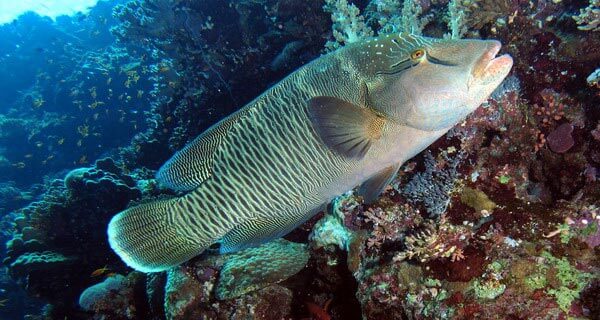
Stonehenge
Stonehenge is a stunning dive site in the Similan Islands. It is located in the northern end of Princess Bay, on the northern side of Koh Miang. The site name derives from the chain of large towering granite boulders that stretching from the island into the depths of the sea. The towering rocks start around 24 meters deep and then drop down to 36 meters deep for sit on a sandy seabed. The site is suitable to advanced divers, because its minimum depth is 24 metres and the currents can be strong sometime. The visibility ranges from good to excellent between 15-25 metres. The big rock formations are covered with barrel sponges, gorgonian sea fans, whips corals, hard and soft corals. The towering rocks are teeming of marine life. Between cracks and crevices seek refuge small Lobsters, Shrimps, Octopus and Clams, as well as Scorpionfish hide here in waiting of prey. Clownfish and Anemonefish take shelter between anemones. Lionfish swim around the granite boulders, as well as a multitude of colourful fish including Yellow Boxfish, Clown Triggerfish, Butterflyfish and Ornate Ghost Pipefish. There are several species of Moray Eels here, especially Giant Morays. Barracuda, Dogtooth Tuna and Bluefin Trevally swim in circle around the pinnacles in constantly hunting of baitfish. At Stonehenge can spot several kinds of sharks like White Tips, Black Tips, Leopard Sharks and occasionally Guitar Sharks. The luckiest divers may also see the rare Shovelnose Ray.Read More
Site Features
- Position: Off the northern side of Koh Miang
- Water Temperature: Between 26-29° C
- Surface Conditions: Calm to slightly choppy
- Current: Moderate to strong
- Diving Depth: Maximum 40 metres, minimum 24 metres
- Visibility: Ranges from good to excellent between 15-25 metres
- Experience Level: Suitable to advanced divers
Hide Away Bay
Hide Away Bay is an interesting dive in the Similan Park, also known by divers as Barracuda Point. It is located a bit further south west of Anita’s Reef, just off the southern point of Koh Ha, the Island # 5. The site combines the two different topographies of diving in the Similan, with the southern part characterized by large granite boulders and the northern section made of fringing coral reef. Thanks to its weak currents, this is an easy dive site suitable for all levels of diver. The visibility is always excellent between 20-30 metres. The coral reef in the northern area starts from 7 metres below sea, the average depth is 12 metres and the max is 25 metres. The reef consists mainly of hard and soft corals, interspersed with colonies of staghorn, gorgonian sea fans and coral bommies of various sizes. The reef is shelter or home to Unicornfish, Bannerfish, Pufferfish, Oriental Sweetlips, Trumpetfish and small families of Lionfish and Butterflyfish. Red Fire Gobies and Blue-lined Snappers are common here as well as bicolour Parrotfish, Fusilier and Wrasse Napoleon. The southern section of Hide Away Bay is deeper. Here the large boulders descend down to more than 35 meters on a sandy bottom. The granite boulders more in depth have sheer clean surfaces with little coral growth. The rocks more near the surface have soft coral, gorgonian sea fans, sea whips as well as sea stars, urchins and sea cucumbers. Besides the usual reef fishes, the marine life here includes other larger specimens like Spotted Garden Eels and Giant Moray Eels, which are hidden between the cracks of the rocks, or Blue Spotted Stingrays lurking in the sandy bottom. Large shoals of giant Barracuda swim in circles around the granite boulders. Black Tip Sharks can be seen just off the reef.Read More
Site Features
- Position: Off the southern point of Koh Ha
- Water Temperature: Between 26-29° C
- Surface Conditions: Calm to slightly choppy
- Current: Calm to moderate
- Diving Depth: Maximum 35 metres, average 12 metres
- Visibility: Ranges from good to excellent between 20-30 metres
- Experience Level: Suitable to all levels of divers
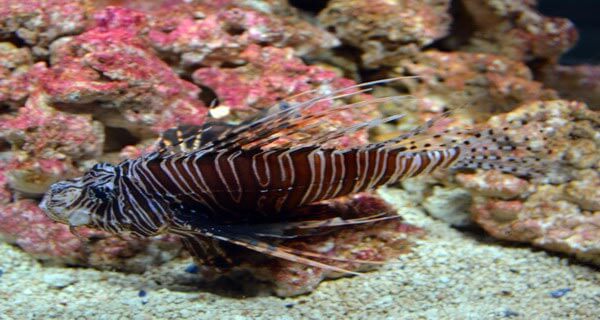
Donald Duck Bay
Donald Duck Bay is located in the north coast of Koh Similan, the Island # 8. The small bay is the most recognisable and photographed landmark in the Similan Islands. Its name derives from a rock on the north side of the bay that resembles the cartoon character. The north west corner is the most popular mooring spot for snorkelling day trippers in the morning and liveaboards diving in the evening. Donald Duck Bay is not the best dive site however, due to its low depth and protection from currents that the bay gives, it is one of the most popular spots for diver training and night dives in the Similan Islands. The reef it is a relatively flat sandy slope with coral bommies that becomes slightly deeper more distant from the beach. The average depth is 8 metres, with a maximum depth of just 20 metres and gentle or no currents. The visibility is excellent, between 15-25 metres. The most interesting section of the dive site is the cluster of boulders which run out of the bay on the northern edge. These form several swim-throughs, home and shelter for Emperor Shrimps, Red Octopus, Cuttlefish, Rock Lobster, Bull and Decorator Crabs. Moray Eels are also numerous here. In the bay they are not normally present large marine species apart from the friendly Turtles, which make the happiness of day trippers. Unfortunately many tourists decide to feed them to attract the turtles to the boats. This is absolutely wrong. Their digestive systems are not suitable to digest nothing more of their natural diet of jellyfish and soft corals, and the approach to the boats becomes a habit which over time can cause injury to the turtles.Read More
Site Features
- Position: On the northwest corner of Koh Similan
- Water Temperature: Between 26-29° C
- Surface Conditions: Calm to slightly choppy
- Current: Mild to moderate
- Diving Depth: Maximum 20 metres, average 8 metres
- Visibility: Ranges from good to excellent between 15-25 metres
- Experience Level: Suitable to all levels of divers and snorkellers
Breakfast Bend
Breakfast Bend is one of best diving sites in the Similan Park, and is suitable for all levels of divers and for snorkellers too. It is located in the north eastern tip of Koh Ba-Ngu, the Island # 9, which is the northernmost of Similan Islands. This is a dive sites that normally the liveaboards approach early in the morning when the light is best, from this derive its name. The reef consists of large granite boulders in the south and a sloping hard coral reef in the north, both very rich of marine life. The reef starts at 5 metres from the surface, first drops down to 18 metres with a gentle slope and then descends more steeply up to 34 metres of deep. The sloping reef is mostly covered with hard coral. The dominant species is staghorn corals, alternating with cabbage corals, brain corals, table corals and plate corals. The reef is teeming of marine life. Between crevices and coral there are small Lobsters, Shrimps, Octopus, Angelfishes, Ghost Pipefishes as well as predators like Scorpionfish and Spotted Garden Eels. Napoleon Wrasse, Yellowtail Barracudas, Turtles and Banded Sea Snakes are regular visitors at Breakfast Bend. The granite boulders at south have few corals but several fascinating small swim-throughs, channels and crevices where can find White Tip Sharks. Due to the stronger currents here you can see the larger marine species like Chevron Barracuda and largest species of Tuna. Leopard Sharks and Blue Spotted Stingrays can be seen resting on the sandy bottom as well as some occasional Black Tip Reef Sharks.Read More
Site Features
- Position: On the north eastern tip of Koh Ba-Ngu
- Water Temperature: Between 26-29° C
- Surface Conditions: Calm to slightly choppy
- Current: Mild to moderate
- Diving Depth: Maximum 34 metres, average 18 metres
- Visibility: Ranges from good to excellent between 15-30 metres
- Experience Level: Suitable to all levels of divers and snorkellers
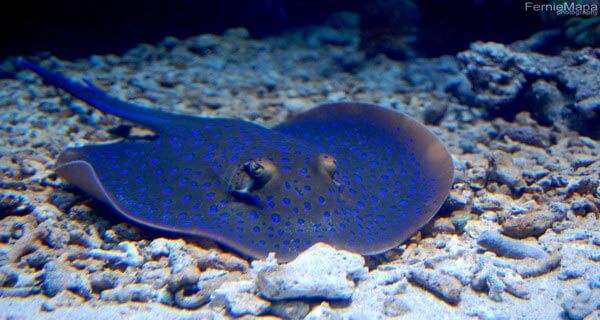
Snapper Alley
Snapper Alley is a very easy dive site located in the southeast coasts of Koh Ba-Ngu, Island # 9. Thanks its mild currents and a maximum deep of 21 metres the site is suitable for all levels of divers, and it is also a famous spot for night diving. The reef is made up of large granite rocks and coral outcrops scattered around a sandy bottom. The granite boulders are covered with table corals, plate corals and brain corals. Some rocks are decorated with sea sponges, gorgonian sea fans and feather stars. There are some swim-throughs between the granite rocks in the areas around the middle of the dive. Small caverns provide natural shelters for a variety of marine fishes. As the name suggests, there are large shoals of various species of snappers, such as Blue-striped Snappers, Checkered Snappers, Black and White Snappers. Marine life in Snapper Alley also includes Barracudas, Black-spot Garden Eels, Moray Eels, Lionfish, Parrotfish and a lot of invertebrates like Decorator Crabs, Rock Lobster, Octopus and Cuttlefish. Blue Spotted Stingrays can be seen in the sandy bottom as well as White Tip Reef Shark and Leopard Sharks.Read More
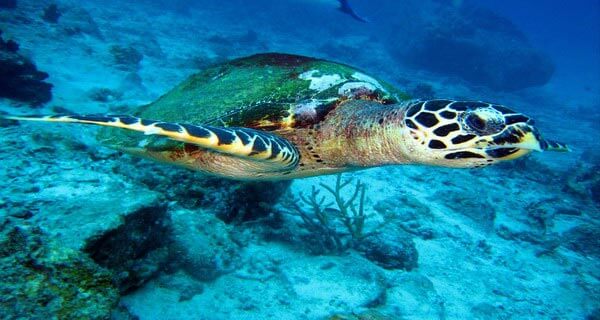
Site Features
- Position: Southeast coasts of Koh Ba-Ngu
- Water Temperature: Between 26-29° C
- Surface Conditions: Calm to slightly choppy
- Current: Mild
- Diving Depth: Maximum 21 metres, average 12 metres
- Visibility: Ranges from good to excellent between 15-25 metres
- Experience Level: Suitable to all level divers
Koh Tachai
Koh Tachai is a remote island which sits alone between the Similan Islands and the Surin Islands. In 2001, the Ministry of Agriculture has included it in the Similan National Park as eleventh island. The island is located about 60 north of Koh Ba-Ngu, the northernmost of the original nine islands that formed the Park, and about 37 Km south of the famous Richelieu Rock, which is part of the Surin National Park. Divers can get there with a diving day trip by speedboat from Khao Lak, about 100-minute boat ride, or with a liveaboard to the Similan Park, the site it's usually visited on the way to Richelieu Rock. There are several dive sites around Koh Tachai, but the most famous are two huge submerged plateaus on the south west corner of the island. Also known as the Twin Peaks, they are two crowned reefs of hard corals and scattered boulders that begin 14 metres below sea surface and then drop dramatically up to 40 meters deep on a sandy bottom. The top of the reefs are mostly covered by a beautiful mixture of hard corals with few patches of coral bommies, while the scattered boulders in the deeper regions are covered with gorgonian sea fans. The site is a challenge suitable to intermediate and advanced divers, due its currents are often strong and also because there aren't areas of the site shallower than 14 metres. However, as every diver knows, where there are great depths and strong currents there are larger fish. Its isolation and the wealth of plankton and bait fish attract Manta Rays and Whale Sharks, which are often spotted here especially during the high season, between February and April. Large shoals of Snappers and Barracuda are perpetually in hunting around the submerged reefs. Leopard Sharks are commonly found resting on the sandy bottom. Nurse Sharks are resident near the edge of granite plateaus or hidden into the swim-throughs between the boulders. Hawksbill Turtles are other usual visitors of Koh Tachai as well as Trevally, Unicornfish, Blue-dash and Yellow-backed Fusiliers. Koh Tachai will be closed to tourists indefinitely beginning 15 October 2016 for a program of recovery of damage caused by an excess of visitors. At the current date is not known whether will be also closed its diving sites.Read More
Site Features
- Position: About 60 Km north of Koh Ba-Ngu, 65 Km northwest of Khao Lak, 165 Km north of Phuket
- Water Temperature: Between 26-29° C
- Surface Conditions: Calm to slightly choppy
- Current: Can be very strong
- Diving Depth: Maximum 40 metres, minimum 14 metres
- Visibility: Ranges from good to excellent between 15-40 metres
- Experience Level: Suitable to intermediate and advanced divers
Koh Bon
Koh Bon is a remote and isolated island between the Similan and the Surin archipelagos. Since 2001, the island was included in the National Park Similan Islands as tithing island. The island is located about 22 north of Koh Ba-Ngu, the northernmost of the original nine islands. Divers can get there with diving day trip by speedboat from Khao Lak, about 80-minute boat ride, or with a liveaboard to the Similan Park, usually visited on the way to the famous Richelieu Rock in the Surin National Park. Koh Bon is famous for being one of the best places in Thailand to see the massive Manta Rays, especially from April to May, when come here to feed on Zooplankton, his favourite food, or be cleaned. The majestic animal is usually maintains a nearly stationary position on top of a coral patch for several minutes while to be cleaned by cleaner fish. There are two main diving sites in Koh Bon known as Koh Bon Ridge and Koh Bon Pinnacle. Unlike all others dive sites in the Similan Islands, which are made up by granite rocks, both Koh Bon sites are in limestone. Koh Bon Ridge is located in the southwest corner of the island, in a bay horseshoe shaped. The bay has weak currents making the site suitable even less experienced divers and ideal spot for night diving. The ridge slopes off to the west with a dramatic wall that descends up to 40 metres deep. The steep wall is well known as one of most vertical underwater drop off in all Thailand. The wall is covered with shaded soft corals and anemones. The limestone cliff is rich of marine life. Here you can see the majority of reef fish habitual in the Andaman Sea, such as Damselfish, Rainbow Runners, Moray Eels, Lionfish, Batfish as well as lots of invertebrates like Octopuses, Cuttlefish, Mantis Shrimps and Crabs. Leopard Sharks and Purple Fire Goby are also common here. However, undoubtedly the dream of every diver to Koh Bon Ridge is spotting the immense Manta Rays, which are often seen swimming in this deeper water. Koh Bon Pinnacle is located on the northwest corner of island, just a few hundred metres north of Koh Bon Ridge. In fact, there are two distinct underwater pinnacles here, and they are right next to each other. The first one has its top at about 18 metres below surface; the second one has its top at 24 metres deep. Both pinnacles drop to over 50 metres deep with two steep cliffs 32 and 26 meters height, which engage the divers in a long swim to reach the sandy bottom. Due their deep drop off and strong currents the two limestone cliffs are suitable to advanced divers. The walls of the pinnacles are mostly covered with hard corals and yellow soft corals. Unlike the other sites of the Similan consist of huge granite boulders, there aren't swim-throughs here but only some caves to explore in the deeper areas, where can be seen Nurse Sharks. The deep waters around the pinnacles are another good spot for see the majestic Manta Rays. Here also were reported sightings of Whale Sharks by some divers. However it is difficult to believe, because these meek sharks aren't regular visitors of Koh Bon. The other large marine species that swim in the deep waters around the pinnacles include White Tip and Black Tip Reef Sharks, Leopard Sharks and large Napoleon Wrasse.Read More
Site Features
- Position: About 22 Km north of Koh Ba-Ngu, 50 Km northwest of Khao Lak, 145 Km north of Phuket
- Water Temperature: Between 26-29° C
- Surface Conditions: Calm to slightly choppy
- Current: Can be strong
- Diving Depth: Maximum 40-50 metres, average 10-25 metres
- Visibility: Ranges from good to excellent between 15-40 metres
- Experience Level: Suitable to intermediate and advanced divers
We Sugest
Find the best Hotel in Phuket at "Lowest Price"
Find cheapest airfare to Thailand
Reach Phuket & Move Around







